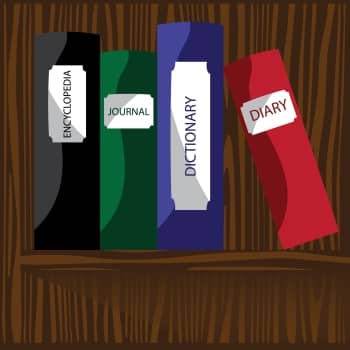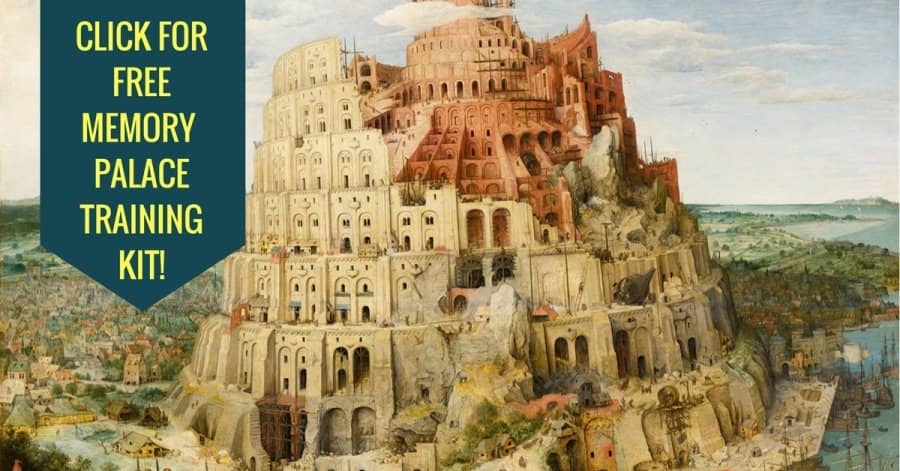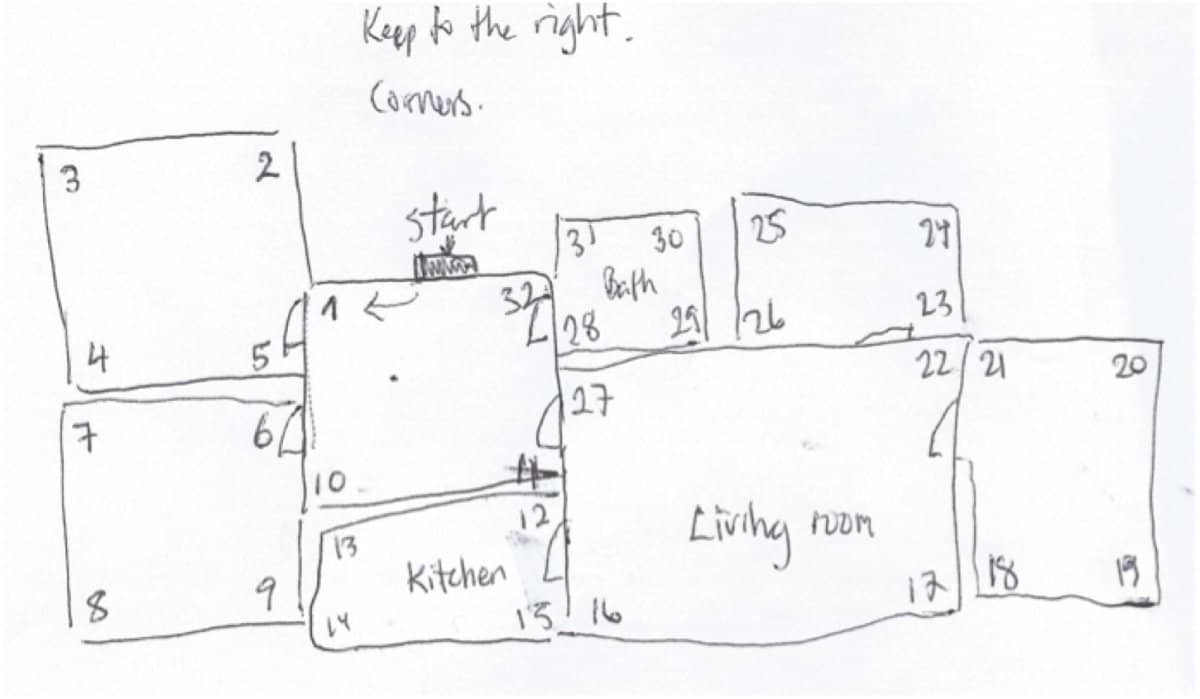Podcast: Download
Subscribe: Apple Podcasts | RSS
 Nothing is more valuable than the benefit of hindsight from someone with experience, especially if you want to become a mnemonics dictionary.
Nothing is more valuable than the benefit of hindsight from someone with experience, especially if you want to become a mnemonics dictionary.
I know because I’ve been there. I used to struggle.
Big time.
But then something changed.
And these days, many people marvel at how rapidly I toss out powerful mnemonic examples on demand.
The truth:
I trained myself to do it.
And I’ve trained thousands of others since then to unlock this simple power.
The only problem is…
A lot of people never reach their goal of being about to pop out reliable Magnetic Imagery (a.k.a. mnemonic imagery) because they get the impression that creating mnemonics is too hard.
(That’s too bad, because the truth is, you don’t even have to have a dictionary full of images in your mind in order to mnemonics to work.)
People also worry that creating effective mnemonics takes too much time, even though all the evidence in the world shows that if you’ll just learn the skill, it gets faster and faster.
Here’s What Most Unsuccessful People Do…
They go running all over the Internet looking for a mnemonic generator or mnemonics dictionary, never understanding that true skill with memory techniques comes from honing your “mnemonics psychology,” a.k.a memory improvement mindset.
And let’s not even try to dodge one basic truth:
Becoming a person who can create useful mnemonics on the fly (even faster than they can create an impromptu Memory Palace) requires some personal power.
After all, you’re summoning up the best powers of your imagination, after all. And that takes…
A Magnetic Fountain Of Mental Energy!
The truth is that getting started can feel like effort.
And some beginners with mnemonics need more energy than others.
But here’s the thing:
The effort needed when using memory techniques like a Memory Palace all amount to a special kind of effort.
A kind of effort that is not only easy and fun to employ, but one that gets easier over time as you transform into a mnemonics dictionary.
What Is A Mnemonics Dictionary?
Basically, most mnemonics dictionaries serve as a crutch.
Some mnemonics dictionaries show you pictures that will help you remember words. They could be for medical terminology or help remembering vocabulary while learning a foreign tongue directly from a language learning book.
For Chinese, Chineasy essentially serves that function. I’ve made my own version for MandarinHQ’s Real Spoken Chinese Vault with special video walkthroughs.
But the difference between Chineasy and the kind of mnemonics dictionaries I create is this:
Whereas others tend to throw you piles of mnemonic examples on end without helping you understand your mnemonic style, I teach you the skill behind creating the mnemonics.
Not only so you can develop your own mnemonics dictionary for a language you’re studying or a particular body of expertise.
But so that you actually understand how your memory and imagination work and can ultimately teach these simple skills to others.
That leads to pure happiness. Seriously, just look at these smiles:
Best part?
When you learn how to fish instead of letting someone fish for you, the reduction in effort happens fast. Here are three ways to fish better that compliment a proper memory technique skillset (and an added mind mapping strategy if you care to add one):
Put those into action and you’ll come to understand one fundamental truth most people don’t know:
You’re Using Mnemonics All The Time Anyway!
You just don’t realize it.
And you probably don’t have a positive outlook on what “effort” really means.
The Truth About “Effort” Everyone Who Wants
To Be A Mnemonics Dictionary Needs To Know
The effort involved in using mnemonics is like kissing or eating chocolate. Once you understand this simple point, you become the world’s best mnemonic generator.
And because you’ll remember all the mnemonics you’ll create, you’ll also become the world’s greatest mnemonics dictionary.
It’s Really Simple To Understand
That Math, Isn’t It?
Whether it’s kissing or eating chocolate, in both cases, you’re using the muscles of your mouth.
And in both cases, your mouth requires energy.
But even though effort is involved, you hardly notice the effort because the experience of kissing and tasting the chocolate feels so good.
Whipping Out Magnetic Imagery Like A Human Mnemonics Dictionary Feels Even Better!
Seriously. Get this simple point and you will quickly become a walking, talking mnemonics dictionary.
And the wonderful after effects linger for a long time too.
But I still have my regrets. I experienced painful learning curves. I sometimes got frustrated.
Here’s the thing:
Becoming A Mnemonics Dictionary Is
A Journey, Not A Destination
It doesn’t have to take long to get rolling (2-5 hours with the Magnetic Memory Method). But it is a skill that you grow with over time.
More than a decade in, I’m still growing myself.
And trust me:
If you’re still a beginner, you can’t even imagine all the things memory techniques will do for you when you’re just at the beginning.
Best part:
When you stay on the path with mnemonics, you have so many things to look forward to. More than you could ever imagine.
But if you’re still sitting on the fence about becoming a mnemonics dictionary, these 5 things I wish I knew before starting with mnemonics will help you.
As always, everything starts with the foundations of the Memory Palace.
1. No One Cares About The Size Of Your Memory Palace
When people start out with mnemonics, they usually start working on one MASSIVE Memory Palace. Here are 5 Memory Palace examples to help you do better.
I made this mistake myself once in awhile at the beginning, and have at times have created mega-sized Memory Palaces.
But almost every time…
The bigger the Memory Palace, the harder it was to use. They were effectively useless.
Small is almost always better, like this one from a Magnetic Memory Method student:
What I’ve learned is that a Memory Palace is usually most effective when it is:
* Small in size
* Based on corners and larger fixtures
* Used for memorizing tactically chosen information
* Used for drilling immediately useful information into long-term memory
But that shopping mall? Grand Central Station? Tiergarten?
No – they’re all far too massive for the beginner mind to conceive.
And that means you have less time and attention to focus on what matters. Instead, work on developing…
The Skill Set Of A Mnemonics Dictionary Master!
For the mind of a memory skills master, massive Memory Palaces are indeed interesting, but not nearly as useful as smaller Memory Palaces for the same reason.
The focus should always be on the Magnetic Imagery, not on the Memory Palace.
Because even if the Memory Palace technique is the ultimate foundation, here’s the truth:
Memory Palaces Are Just One Tool
In The Toolbox Of Mnemonics
And without mastering them and moving past this skill, you never quite get to the part that matters:
Using Magnetic Imagery so that you can have a mnemonics dictionary in your head.
Frankly, your Memory Palace should be like a constellation. You should create it with enough simplicity that you can see and feel it in the same way you see the Big Dipper.
In other words, you know it’s the Big Dipper at a glance, WITHOUT having to impose a spoon on the constellation.
Where does my biggest Memory Palace cap out?
50 Magnetic Stations appears to be my general sweet spot.
(Yes, I have a magnificent Memory Palace with 58 Magnetic Stations, but 5 rooms with 10 Stations in each is a solid number when you can get it.)
And as luck would have it, you usually have no problem putting that together in an apartment or home.
The Mnemonic Magic Of Drilling Down
But here’s the thing:
I’ve recently been enjoying great benefits from thinking of individual rooms as a Memory Palace.
Whereas in the past, I would have considered my entire apartment a Memory Palace, I now think of the studio, bathroom, kitchen, etc. as their own independent Memory Palaces.
My current apartment is still held for the exclusive purpose of learning Chinese, but I’ve found that shifting from “apartment as Memory Palace” to “room as Memory Palace” has made Recall Rehearsal much more fruitful.
2. The Map Is Not The Territory
Over the years, I’ve made many Memory Palaces that have never been used.
This is a good thing!
Why?
Because Memory Palace creation is a mnemonic skill until itself. Memory Palace creation exercises your spatial memory and keeps you thinking about the most important mnemonic strategy we’ve got: location-based mnemonics.
Using a Memory Palace, on the other hand, is also an art unto itself. It’s in using the Memory Palace that the real memory magic happens because the other tools of mnemonics come into play:
Magnetic Association and Recall Rehearsal.
So the irony is that you really can improve as a Memory Palace architect merely by blueprinting. But the only true growth and depth if insight takes place when you dive in and spend some time inside your mnemonic creation.
3. The Memory Palace Must Be Drawn
I spent a long time creating Memory Palaces based on what I read in books. But never once did anyone suggest drawing out a Memory Palace.
Looking back, this strikes me as insane. Every advantage I’ve experienced and principle I’ve discovered for creating well-formed Memory Palaces comes from getting pen and pencil in hand.
And in nearly every case, the drawn Memory Palace works far better than one that is merely imagined on its own.
Since teaching this important principle, I’ve received hundreds upon hundreds of Memory Palace drawings from people. They don’t always follow the key principles of identifying certain core Magnetic Stations.
But because they’ve drawn the Memory Palace, it’s easy for us to look together and better strategize the mnemonic journey they’ll be using to learn and remember their topic.
4. Small Sets Of Info Enter Long-Term Memory
With Greater Ease Than Monster Lists
Although any mnemonist can Magnetically encode and memorize large amounts of information, there’s a difference between short term and long term recall.
And if you want the amount of info in your mind that only a mnemonics dictionary can provide…
Long-term retention is always the goal.
Think about it in business terms:
Maximizing the return on time and energy invested is the key factor.
But because not all information is created equal, no reasonable person can expect a fast and solid guideline that applies across the board.
The amount of Recall Rehearsal needed for some words may be more than others. You might encode one mathematical formula once and hold it in memory forever and require more exposure to another, even if it’s technically easier.
That said, Recall Rehearsal, based on Dominic O’Brien’s Rule of Five, is a go-to starting point.
Modify from there based on your needs and work with small sets of information for each recall session so you maintain focus over the long haul. You’ll get more information into long-term memory by working with small sets over the course of a month than you will by cramming.
5. Never Cave Into Self-Critical Perfectionism And Judgment
Judging the appropriateness of my Magnetic Imagery plagued me for far too long.
No, I’ve never been a prude. But I was raised to be a gentleman and had suffered some abuses to my imagination from a religious upbringing that caused me concern as I developed my memory skills.
Don’t fall prey to internal or external judgment.
Memory techniques work best when you eliminate the stress of judgment. Although the associations you make might seem extreme, they’re just in your mind. Chances are you’ll even forget them anyhow, holding only the target information in mind.
Likewise, don’t let perfection get in the way. The Magnetic Memory Method shows you the best ways to proceed, but again, the map is not the territory. You’ve got to dive in, take action and even make the odd mistake. Without taking action, you cannot learn.
Knowing what I know now and having experienced the absolute power a superb memory brings, I wish I’d known these five things in advance. They are game changers when you have large learning projects.
And as we all know, time is so short in this life.
I hope this set of 5 hindsights help you avoid some of the problems I faced so you can race straight to getting results with the mnemonics dictionary you’re building in your mind.
So, what are you waiting for?…
Ready, set, memorize!
Related Posts
- How to Memorize Something Fast: 5 Simple Memory Techniques
Wondering how to memorize something fast? Read now for 7 solid steps you can follow…
- On Math, The Science Of Mnemonics And Memory Modalities
Candid talk on the science of mnemonics with notes on math and rep systems.
- On Math, The Science Of Mnemonics And Memory Modalities
Candid talk on the science of mnemonics with notes on math and rep systems.







8 Responses
Sorry Anthony – I don’t think you’re ever going to convince me that mnemonics is better than kissing or chocolate!!
As always, really enjoyed the article which made me laugh.
Ha ha…
No I suppose that one will be a hard sell for many.
But it’s a lot more like kissing and eating chocolate than it is like being in the boxing ring. And so many people treat it like they’re about to take a huge beating, which just isn’t correct.
Done well, memory techniques should tap into the brain’s pleasure centers. And if we can get people a quick victory with the techniques, they can become hooked on learning itself. That’s the goal – and I always appreciate your support. Thanks for taking a moment to keep the conversation humming along! 🙂
Hi Anthony,
Thank you for your great work.
But I have a question.
If I am learning English and I want to for example learn 50 vocabularies not in alphabetical order what should I do?
You said, that for Chinese you are using your rooms as small memory palaces.What do you recommend to me?
Should I use 26 memory palaces or use one memory palace for better Recall Rehearsal?
Thank for reply
Jindrar
Thanks for this, Jindrar.
Personally, I would still alphabetize the words for reasons discussed in my free course.
I would also still create a 26 Memory Palace network for the benefits of extending your spatial memory.
It might sound like the long way around, but in reality, it’s the most profound shortcut in many ways. For more tips on why, check out the videos on this page about learning a foreign language.
Hello Anthony!
Reflecting on your suggestion to draw/sketch a palace.
When creating a memory palace myself, I use to take pictures of the object as a whole and different parts, then mark points of interest in those. I tend to default about 30 stations in “one room” if the palace is a house/apartment, 10 stations on bike/car/boat and 10-30 in parks/outdoor areas.
For me, apartments/houses/parks/outdoor areas starts with few stations, and later is enriched with more stations if needed. While an object like a car,bike is static in amount of stations, those are temporary palaces for memory tasks that you don’t want/need to keep longer than a couple of hours or days…
I think new memory palaces initially should be small (few stations) and if needed later, enriched (increase amount of stations in each room/region).
Setting one region/room as a station, and then having multiple stations in each room/region later on, increases the chance that you actually will make actual use of the palace.
To increase rehearsal ease/speed on new stations in a memory palace, you can place major system objects (1 to 10 or whatever amount needed) on/at each new station. Rehearsing now should be a task thinking : “one, toe , place1, two , hen , place2 ….” If a place is not popping up, you go back to the photos or blueprint and try a better spot for the station or get a better association.
Memory palaces with huge amount of stations are rarely needed, so aiming for keeping it small and simple usually is a good idea.
This is great, Pelle – thanks for sharing your experience!
It is great that you start small and grow progressively. And great thoughts on how that process leads to actual use. I’ve had similar experiences, though most often the Memory Palaces are built for particular learning outcomes that have already been decided upon.
Have you seen the recent video I made on the Sydney Opera House as a Mega Memory Palace – and why I wouldn’t use it that way?
Hello Anthony!
I watched the video post after you mentioned it in your response.
I totally agree with you there!
Many are the reasons why simple, compact Memory Palaces are the better option to operate!
Yes, indeed – and more reasons stacking on every day.
Thanks as ever for your discussion and look forward to your next post!